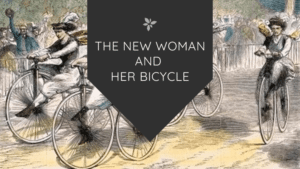Fay Kellogg (1871–1918) was an American architect and suffragette who helped to open the field of architecture to women who followed. She was described in her own time as “the foremost woman architect in the United States”, and known for staying on the job site “until the last brick is laid and the last nail is driven.”
Fay was born in Pennsylvania and studied at Columbian University (now called George Washington University) in Washington D.C. At first she intended to become a doctor, but her father convinced her to study drawing instead and offered to pay all her tuition if she switched.
I was always handy with my tools, and more than once beat my brothers in work with the hammer and saw. Fay Kellogg
After studying with a tutor for two years, she moved on to the Pratt Institute in Brooklyn. She worked for a New York architectural firm for a while, but then decided to continue her in Paris in order to further her career. At the time, women were not admitted to the Ecole des Beaux Arts, where Fay wanted to go. During her stay in Paris, she brought attention to herself with her fight for the admission of women to the prestigious academy. She never attended the school herself, but she played a large role in opening up the Ecole des Beaux Arts to women and paved the way for the first female graduate in 1902, Julia Morgan.
And why shouldn’t a woman do as well at this profession as a man? Why, in my opinion, the very nature of the field invites her services. In fact, it needs her. Fay Kellogg

Fay returned to the US in 1900 and was immediately employed by an established architect in New York City, John R. Thomas. While working for him she designed the large double staircase in the atrium of the Hall of Records, and she came up with the idea of placing statues of earlier governors on the building. The Hall of Records is now called Surrogate’s Court-Hall of Records and was named a landmark by the New York Landmarks Preservation Commission in 1986.
After her employer died, Fay started her own architectural firm in 1903. She started off right away with a commission to renovate and construct seven buildings for the American News Company in Manhattan, and they soon placed her in charge of all their work in New York City. She directly supervised all work within 200 miles of the city, and drew plans for other projects that were further away.
Even before she struck out on her own, Fay was known for getting highly involved in her projects, climbing around the scaffolding on the Hall of Records almost a hundred feet above the streets. In her skirt, she’d scale ladders, jump across gaps, and run up and down wobbly unfinished stairs to make sure every detail of her plans were carried out correctly. She wanted to be “on the job until the last brick is laid and the last nail is driven.”

Fay designed or was involved in designing hundreds of buildings and cottages, suburban railway stations, and even a skyscraper in San Fransisco. She helped to design the Woman’s Memorial Hospital in Brooklyn, which was founded in 1881 by women physicians who had been refused positions in existing hospitals. (The building was bought at auction by The Jewish Hospital in 1903, and is now known by that name.)
There can be no more anomalous condition than that which makes men the sole builders of our homes, while women, their chief occupants and governing spirits, are excluded from all participation in their preparation. Fay Kellogg
During World War I, Fay was one of three women architects (including Julia Morgan and Katherine Budd) who were contracted to design “hostess houses” for military camps. Before the hostess houses were built, the wives of the soldiers had no specific place to meet and spend time with their husbands when they visited. The hostess houses were staffed by female attendants, and even featured cafeterias and dining rooms. The soldiers could now have their families and friends over for dinner or tea.
Fay was also a supporter of women’s suffrage. Her attendance was recorded at an address by famous suffragist Emmiline Pankhurst at Carnegie Hall in 1909. She was the only architect among dozens of professional women who were seated on the stage. She was also a member of the Equality League of Self Supporting Women of New York City, which was founded in 1907.
[…]it was always my ambition to be able to build a nice little house which I could call my own, and I am proud to say that this and a lot more has been realized. Fay Kellogg
Fay’s dream was to retire to her fifteen-acre farm on Long Island. The land was considered a wasteland when she bought it, and she spent her income of up to $10,000 a year developing it. The farmhouse was very modern with electric lights, and framed by roses and clematis.
Besides designing for herself, she also enjoyed athletic activities like fencing, boxing, wrestling, horse-riding, basketball, and golf.
Fay Kellogg was well-known among architects at the time, and had several newspaper articles written about her. She helped to open the field of architecture to women after her, especially with her campaigning to open up the Ecole des Beax Arts to female students.
I am not proud of anything I have done, but I shall be proud of the things I intend to do. I want to build a skyscraper—a different and better skyscraper than has ever been built. Fay Kellogg
Featured image of Fay Kellogg from Pearson’s Magazine February 1911, retrieved from Preservation in Mississippi.
Recommended Reading
Keri is a blogger and digital marketing professional who founded Amazing Women In History in 2011.






Amazing woman.I just stumbled into this article and I was awed.I am proud to be a woman.The story of Fay Kellogg inspired me to be a better woman of my age.Yes there’s is no limit to any person if she wants to make a difference.More Power to us Women.
Thanks for another magnificent post. Where else may anyone get that kind of information in such an ideal method of writing? I’ve a presentation next week, and I am at the look for such information.